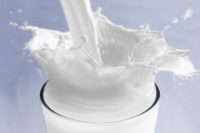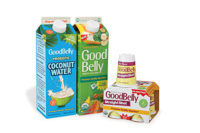Brand and retail marketers have tended in recent years to focus on the burgeoning purchasing power of millennials, yet the population over 60 is growing even faster worldwide and maintains the highest share of buying power. Companies that make dairy and beverage products would do well to target seniors’ needs and desires with packaging and product formulation, according to a white paper released today by Tetra Pak Inc.
The paper cites Euromonitor/AT Kearney data showing that the share of income for U.S. seniors 60 and older will grow from 16% in 2005 to 24% in 2020. And according to the United Nations, 8% of the world’s population is aged 60 and above, but that will grow to 22% by 2050.
“There’s a heck of a lot of them, and there’s more to come,” said Libby Costin, vice president of global marketing for Tetra Pak, during a press event held at the Sweden-based company’s U.S. headquarters in Denton, Texas, on Oct. 20. “With expected spending power of $10 trillion by 2020, “they have time, they have money, and they’re out shopping.”
Among the key findings in the Tetra Pak report: nearly one-third (32%) of seniors say they seek out products and services that help them stay active, they prefer traditional rather than “experimental” tastes in both products and packaging, they are brand loyal with nearly one-third (30% ) sticking with one brand, they value high quality (92% say it’s important) more than low price, and they disdain overt appeals to their age.
“We think there’s an opportunity to put a focus on this demographic, but we have to be careful,” Costin said. “They don’t think of themselves as old, and they don’t want to be treated that way.”
To underscore that point, Lynn Phillips, global consumer intelligence manager for Tetra Pak, relayed the results of her “focus group of one” when she asked her 84-year-old mother, “What age do you consider old? The response: “I’ll let you know.”
How should dairy processors respond?
Based on these findings, Tetra Pak offered several general suggestions to dairy and beverage companies on how to handle product packaging and formulation, which are company’s core lines of business.
Packaging needs to be easy to handle, open and read, mindful of reduced strength and vision. The company’s research showed that seniors say typefaces on packaging labels are often too small or difficult to read, while colors do not contrast enough for their reduced vision to easily navigate, Phillips said.
And packaging is sometimes too heavy to lift or lids are too tight to open for those with reduced wrist strength, she said, citing research that shows hand grip strength declines 20% between ages 40 and 65.
Product formulation should be based heavily around healthy products, with less salt, sugar, calories and fat, while fortified with minerals and vitamins that promote digestive, cardiovascular, bone and brain health, the Tetra Pak paper says.
Seniors seek out “fortified and functional” foods, Phillips said, for example dairy products that contain not only calcium but vitamin B2 and omega-3 that might help mitigate against the cognitive decline of dementia or Alzheimer’s disease.
Chris Gretchko, vice president-marketing at Tetra Pak, sees the white paper as a conversation starter for her company’s clients, and she believes dairy companies will be well-positioned to put the insights to use, given their products’ natural healthfulness.
“The benefit of dairy is that it’s already got the building blocks of a healthy, long-life nutritional product,” she said. And ongoing research can help to enhance it: “If I can get a glass of milk that helps with vision retention, sign me up.”
[Updated 22 Dec. 2016]
For more on Tetra Pak's capabilities, read "Need a pilot plant? This company flies customers from ideation to reality"



